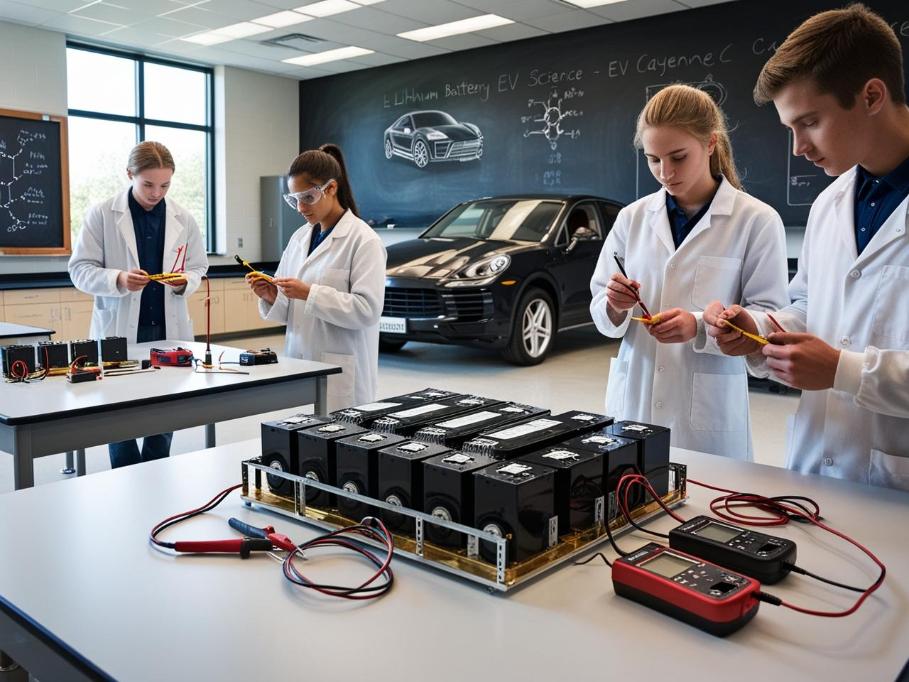
Electrochemistry is often considered abstract by students; ions, half-reactions, and voltage potentials seem to be meaningless terms from a textbook. But imagine if science teachers could incorporate a Porsche Cayenne into the lesson plan.
With electric vehicles on the rise, teaching Porsche Cayenne lithium battery repair becomes an exceptional case study for students to learn essential electrochemical concepts. Teachers can bridge the theory-practice gap and change students’ understanding through work-based activities involving the repair of lithium iron phosphate (LiFePO₄) batteries.
1. Engaging Practitioners with Chemistry Practice through LiFePO₄ Technology
In the Porsche Cayenne electric vehicle, the LiFePO₄ battery provides a safer lithium-ion battery alternative due to its more thermally stable properties. Discussing its design introduces students to redox reactions, ion mobility, electrolytes, and even heating elements. Instead of stagnant equations, students can witness electron flow the same way a high-end SUV powers up.
Instructors can use dismantled battery modules to illustrate the processes of generating, storing, and depleting voltage in real time. Students can practically participate in a ‘miniature’ science diagnostic laboratory.
2. Teaching Redox Reactions Through Battery Repair
The oxidation-reduction (redox) reactions may be taught in context through the processes involved in repairing batteries. A cell facilitates redox reactions throughout its life, but its efficiency decreases with age. Technicians who work on Porsche Cayenne lithium batteries typically evaluate these changes to identify cells that need reconditioning and those that need discarding.
These processes can be broken down into specific models that show how chemical potential and current change over time, helping students analyze results instead of just interpreting them to link mechanical processes to chemical theories.
ALSO READ: 5 Brilliant Ways Seus Lighting Transforms Science Classrooms
3. Voltage, Current, and Classroom Calculations
The Porsche Cayenne’s 12V lithium battery system can serve as a basis for discussing electrical concepts. To exemplify, students may perform hands-on experiments measuring voltage and resistance, calculate total energy output, or model charge/discharge cycles to understand Faraday’s laws of electrolysis.
The educational value in having specifications from automotive batteries is that the learning experience is data-laden and technically rich—perfect for students interested in STEM.
4. Eco-Conscious Science Education
The environmental impact of science teaching is further enhanced by the sustainability merits associated with the repair and reuse of lithium batteries. This accentuates the need to conserve resources through smarter battery repair by extending battery useable life and reducing electronic waste. Researching the consequences of lithium extraction enables students to look into how battery design is changing to support greener systems.
Incorporating these areas provides a more unified education in science, which includes elements of chemistry, physics, engineering, and environmental education.
5. Openings to Career Opportunities in STEM
Ultimately, demonstrating practical examples such as battery diagnostics at Porsche enables students to imagine themselves working in automotive engineering, battery chemistry, or renewable energy technology. It transforms science from a mere variable into something vibrant, creative, and essential for the future.
Educators are empowered to motivate future scientists, engineers, and visionaries by bringing automotive electrochemistry to advanced classes, enhancing cross-disciplinary connections.
